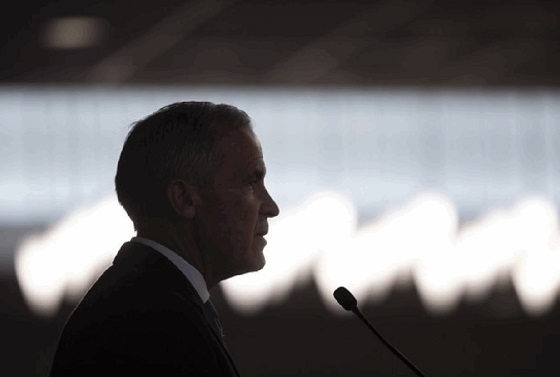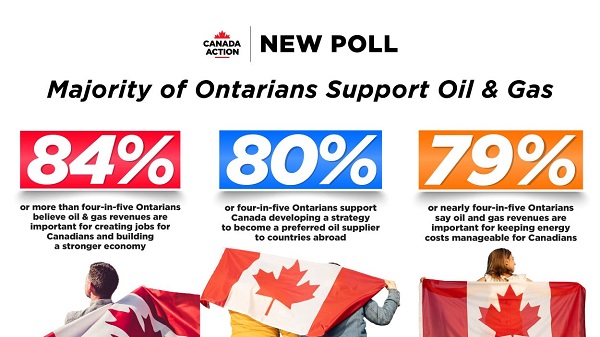Uncategorized
Rescuers detect possible sign of life under quake-hit hotel

PALU, Indonesia — A French rescue team said Thursday it has detected a possible sign of life under the rubble of a hotel in Indonesia’s central Sulawesi, nearly a week after it was hit by a powerful earthquake and tsunami. They cautioned that other factors could cause the sensors they use to give a false result.
Philip Besson, a member of the French organization Pompiers de l’urgence, said the team’s high-tech sensors “detected the presence of a victim” in the wreckage of the four-star Mercure Hotel in Palu but wasn’t able to say if the person is conscious. The device is able to pick up signs of life, including breathing and heart beats, he said.
Nita Hamaale, whose 20-year-old younger sister is believed to be buried beneath the hotel rubble, said a translator for the French rescue team told her they didn’t want to raise her hopes. The translator said it’s possible other factors such as gas in the rubble could result in a false positive, Hamaale told The Associated Press.
Besson said the five-member team only had a hand drill that was not strong enough to reach the victim, who was trapped under thick concrete, and had to abandon digging as night fell. Besson said they would bring heavy equipment early Friday to try to rescue the person.
“We have to drill through the concrete to be able to verify and access the victim,” he told AP.
Rescue efforts since last Friday’s quake, which killed more than 1,400 people, have been greatly impeded by a shortage of heavy equipment.
National disaster agency spokesman Supoto Purwo Nugroho said the body of a South Korean man was among eight dead pulled Thursday from the wreckage of another hotel, the Roa Roa, which collapsed sideways in a heap of cement and steel. Local television said the man, the only foreigner known to have perished in the disaster, was a paraglider taking part in an event in the area.
As the search for victims continued, aid workers raced to get shelter, food, medicine and other badly needed supplies to survivors.
The Indonesian military was bringing in hundreds more troops to help with search and rescue efforts and keep order among survivors who have grown desperate six days after their lives were thrown into chaos. Hundreds of the injured and other survivors lined up on the tarmac of Palu’s badly damaged airport, hoping to escape aboard military aircraft.
As help and supplies began arriving, there were other signs of progress: Trucks were hauling in new electricity poles to replace broken ones and restringing the wires. Workers said they intended to repair all the damage to the networks and substations and get them reconnected to the grid within days.
The United Nations announced a $15 million allocation to support relief efforts, saying more than 200,000 people were in dire need of assistance.
More than 70,000 homes are thought to have been wrecked by the quake, demolished by the tsunami or engulfed by mud slides. Thousands of people are sleeping in tents or in rough shelters made from debris, unsure when they’ll be able to rebuild. Many spend their days trying to secure basics like clean water and fuel for generators.
“Please tell the government and the NGOs if they’re really willing to help us with some food please do not give it away through the command posts,” said Andi Rusding, who was huddled with his relatives under a tarpaulin. “It’s better to go directly to each and every tent. Because sometime (the relief goods) aren’t distributed evenly.”
“It’s really difficult to find water and we don’t have a place to shower, but thank God we got some aid from the government, including a medical checkup,” said Masrita Arifin, who was camped out a few hundred meters (yards) from her family’s heavily damaged home.
Nugroho said most of the 1,424 confirmed dead had been buried. The death toll is expected to rise as rescue crews dig and comb through debris after being slowed initially by impassable roads and other damage.
People and heavy machinery were struggling to unearth victims from expanses of earth that surged sideways due to liquefaction, a phenomenon in which an earthquake turns loose, wet soil into quicksand-like mud. Several communities were wiped out as homes suddenly sank into the mire, which has since hardened in the tropical sun.
Many victims might have survived with faster help, said Palu resident Bambang. He told local television he found a friend injured and trapped under debris but was unable to help him. The friend died, leaving a message to have him buried in front of his church, he said.
“He was still alive then, but he died because the evacuation was so slow,” said Bambang, who like many Indonesians uses one name.
Indonesian Foreign Minister Retno Marsudi said military transport aircraft from India and Singapore had arrived to help in the relief efforts, including transporting supplies and evacuating victims. Marsudi said 18 countries had offered help and the government was still working out arrangements with some countries, including Japan and the United States.
National police spokesman Brig. Gen. Dedi Prasetyo said security was being ramped up to ensure law and order after 92 people were arrested for looting goods such as motor oil, tires and farming equipment. Authorities earlier allowed desperate villagers to grab food supplies from shops but warned them not to take other things.
Palu has repeatedly been hit by the quakes and tsunamis that plague much of the Indonesian archipelago. The national disaster agency says more than 148 million Indonesians are at risk in earthquake-prone areas and 3.8 million people also face danger from tsunamis, with at most a 40 minute window for warning people to flee.
Among those gathered at the airport in Palu was Fitriani, one of a group of students hoping to leave for an Islamic competition in far-off Medan, on the island of Sumatra. The group of students have been practicing calligraphy and reciting the
“We survived here,” Fitriani said. “We pray we can be safe in Palu.”
___
Associated Press writer Eileen Ng in Jakarta, Indonesia, contributed to this report.
Tassanee Vejpongsa, The Associated Press
Uncategorized
Mortgaging Canada’s energy future — the hidden costs of the Carney-Smith pipeline deal


Much of the commentary on the Carney-Smith pipeline Memorandum of Understanding (MOU) has focused on the question of whether or not the proposed pipeline will ever get built.
That’s an important topic, and one that deserves to be examined — whether, as John Robson, of the indispensable Climate Discussion Nexus, predicted, “opposition from the government of British Columbia and aboriginal groups, and the skittishness of the oil industry about investing in a major project in Canada, will kill [the pipeline] dead.”
But I’m going to ask a different question: Would it even be worth building this pipeline on the terms Ottawa is forcing on Alberta? If you squint, the MOU might look like a victory on paper. Ottawa suspends the oil and gas emissions cap, proposes an exemption from the West Coast tanker ban, and lays the groundwork for the construction of one (though only one) million barrels per day pipeline to tidewater.
But in return, Alberta must agree to jack its industrial carbon tax up from $95 to $130 per tonne at a minimum, while committing to tens of billions in carbon capture, utilization, and storage (CCUS) spending, including the $16.5 billion Pathways Alliance megaproject.
Here’s the part none of the project’s boosters seem to want to mention: those concessions will make the production of Canadian hydrocarbon energy significantly more expensive.
As economist Jack Mintz has explained, the industrial carbon tax hike alone adds more than $5 USD per barrel of Canadian crude to marginal production costs — the costs that matter when companies decide whether to invest in new production. Layer on the CCUS requirements and you get another $1.20–$3 per barrel for mining projects and $3.60–$4.80 for steam-assisted operations.
While roughly 62% of the capital cost of carbon capture is to be covered by taxpayers — another problem with the agreement, I might add — the remainder is covered by the industry, and thus, eventually, consumers.
Total damage: somewhere between $6.40 and $10 US per barrel. Perhaps more.
“Ultimately,” the Fraser Institute explains, “this will widen the competitiveness gap between Alberta and many other jurisdictions, such as the United States,” that don’t hamstring their energy producers in this way. Producers in Texas and Oklahoma, not to mention Saudi Arabia, Venezuela, or Russia, aren’t paying a dime in equivalent carbon taxes or mandatory CCUS bills. They’re not so masochistic.
American refiners won’t pay a “low-carbon premium” for Canadian crude. They’ll just buy cheaper oil or ramp up their own production.
In short, a shiny new pipe is worthless if the extra cost makes barrels of our oil so expensive that no one will want them.
And that doesn’t even touch on the problem for the domestic market, where the higher production cost will be passed onto Canadian consumers in the form of higher gas and diesel prices, home heating costs, and an elevated cost of everyday goods, like groceries.
Either way, Canadians lose.
So, concludes Mintz, “The big problem for a new oil pipeline isn’t getting BC or First Nation acceptance. Rather, it’s smothering the industry’s competitiveness by layering on carbon pricing and decarbonization costs that most competing countries don’t charge.” Meanwhile, lurking underneath this whole discussion is the MOU’s ultimate Achilles’ heel: net-zero.
The MOU proudly declares that “Canada and Alberta remain committed to achieving Net-Zero greenhouse gas emissions by 2050.” As Vaclav Smil documented in a recent study of Net-Zero, global fossil-fuel use has risen 55% since the 1997 Kyoto agreement, despite trillions spent on subsidies and regulations. Fossil fuels still supply 82% of the world’s energy.
With these numbers in mind, the idea that Canada can unilaterally decarbonize its largest export industry in 25 years is delusional.
This deal doesn’t secure Canada’s energy future. It mortgages it. We are trading market access for self-inflicted costs that will shrink production, scare off capital, and cut into the profitability of any potential pipeline. Affordable energy, good jobs, and national prosperity shouldn’t require surrendering to net-zero fantasy.If Ottawa were serious about making Canada an energy superpower, it would scrap the anti-resource laws outright, kill the carbon taxes, and let our world-class oil and gas compete on merit. Instead, we’ve been handed a backroom MOU which, for the cost of one pipeline — if that! — guarantees higher costs today and smothers the industry that is the backbone of the Canadian economy.
This MOU isn’t salvation. It’s a prescription for Canadian decline.
Uncategorized
Cost of bureaucracy balloons 80 per cent in 10 years: Public Accounts

The cost of the bureaucracy increased by $6 billion last year, according to newly released numbers in Public Accounts disclosures. The Canadian Taxpayers Federation is calling on Prime Minister Mark Carney to immediately shrink the bureaucracy.
“The Public Accounts show the cost of the federal bureaucracy is out of control,” said Franco Terrazzano, CTF Federal Director. “Tinkering around the edges won’t cut it, Carney needs to take urgent action to shrink the bloated federal bureaucracy.”
The federal bureaucracy cost taxpayers $71.4 billion in 2024-25, according to the Public Accounts. The cost of the federal bureaucracy increased by $6 billion, or more than nine per cent, over the last year.
The federal bureaucracy cost taxpayers $39.6 billion in 2015-16, according to the Public Accounts. That means the cost of the federal bureaucracy increased 80 per cent over the last 10 years. The government added 99,000 extra bureaucrats between 2015-16 and 2024-25.
Half of Canadians say federal services have gotten worse since 2016, despite the massive increase in the federal bureaucracy, according to a Leger poll.
Not only has the size of the bureaucracy increased, the cost of consultants, contractors and outsourcing has increased as well. The government spent $23.1 billion on “professional and special services” last year, according to the Public Accounts. That’s an 11 per cent increase over the previous year. The government’s spending on professional and special services more than doubled since 2015-16.
“Taxpayers should not be paying way more for in-house government bureaucrats and way more for outside help,” Terrazzano said. “Mere promises to find minor savings in the federal bureaucracy won’t fix Canada’s finances.
“Taxpayers need Carney to take urgent action and significantly cut the number of bureaucrats now.”
Table: Cost of bureaucracy and professional and special services, Public Accounts
| Year | Bureaucracy | Professional and special services |
|
$71,369,677,000 |
$23,145,218,000 |
|
|
$65,326,643,000 |
$20,771,477,000 |
|
|
$56,467,851,000 |
$18,591,373,000 |
|
|
$60,676,243,000 |
$17,511,078,000 |
|
|
$52,984,272,000 |
$14,720,455,000 |
|
|
$46,349,166,000 |
$13,334,341,000 |
|
|
$46,131,628,000 |
$12,940,395,000 |
|
|
$45,262,821,000 |
$12,950,619,000 |
|
|
$38,909,594,000 |
$11,910,257,000 |
|
|
$39,616,656,000 |
$11,082,974,000 |
-

 armed forces1 day ago
armed forces1 day agoRemembering Afghanistan and the sacrifices of our military families
-

 Fraser Institute1 day ago
Fraser Institute1 day agoHow to talk about housing at the holiday dinner table
-

 Frontier Centre for Public Policy1 day ago
Frontier Centre for Public Policy1 day agoTent Cities Were Rare Five Years Ago. Now They’re Everywhere
-

 Opinion1 day ago
Opinion1 day agoPope Leo XIV’s Christmas night homily
-

 Fraser Institute16 hours ago
Fraser Institute16 hours agoCarney government sowing seeds for corruption in Ottawa
-

 Alberta16 hours ago
Alberta16 hours agoAlberta Next Panel calls for less Ottawa—and it could pay off
-

 Energy6 hours ago
Energy6 hours agoNew Poll Shows Ontarians See Oil & Gas as Key to Jobs, Economy, and Trade
-

 Energy15 hours ago
Energy15 hours agoWhile Western Nations Cling to Energy Transition, Pragmatic Nations Produce Energy and Wealth










